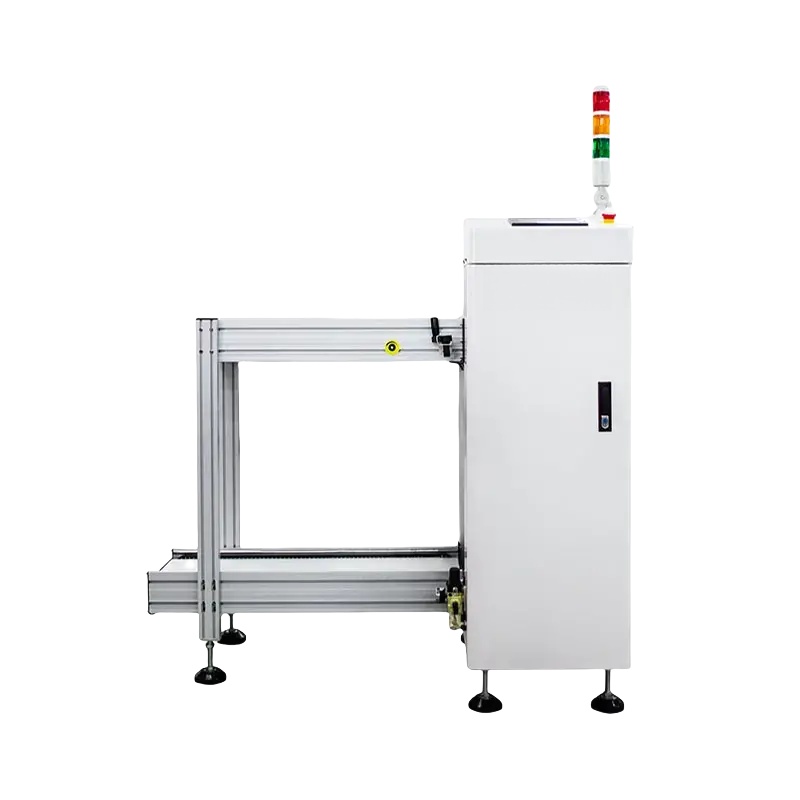Content Menu
>> Understanding PCB Loader Machines
>>> Key Functions of PCB Loader Machines
>> Types of PCB Loader Machines
>> Benefits of Using PCB Loader Machines
>> How Does a PCB Loader Machine Work?
>> Common Issues with PCB Loader Machines
>> Troubleshooting Tips
>> Frequently Asked Questions (FAQs)
>> Conclusion
Understanding PCB Loader Machines
PCB loader machines are automated devices that streamline the process of transferring PCBs from magazines to production lines. They are crucial for ensuring that PCBs are handled safely and efficiently, minimizing the risk of damage during loading.
Key Functions of PCB Loader Machines
- Automated Loading: PCB loaders automatically push PCBs from a magazine onto the conveyor belt of the downstream machine, significantly reducing manual labor.
- Speed and Efficiency: These machines can load multiple PCBs quickly, maintaining high production rates without delays.
- Flexibility: Many PCB loaders can accommodate various PCB sizes and configurations, making them versatile for different production needs.

Types of PCB Loader Machines
There are several types of PCB loader machines available, each designed to meet specific production requirements:
1. Standard Magazine Loaders: These loaders use magazines to hold multiple PCBs and automatically load them onto the production line.
2. High-Speed Loaders: Designed for rapid loading, these machines can handle a large volume of PCBs in a short time.
3. Customizable Loaders: Some models allow users to adjust settings such as loading speed and direction, providing flexibility for different production environments.
Benefits of Using PCB Loader Machines
Implementing a PCB loader machine in a manufacturing line offers numerous advantages:
- Increased Productivity: By automating the loading process, manufacturers can achieve higher output rates.
- Reduced Labor Costs: Automation decreases the need for manual handling, leading to cost savings in labor.
- Improved Quality Control: Automated systems reduce the risk of human error during loading, enhancing overall product quality.
- Enhanced Safety: By minimizing manual handling, the risk of accidents and injuries in the workplace is reduced.

How Does a PCB Loader Machine Work?
PCB loader machines operate using a combination of mechanical systems and control software. Here's a simplified overview of their operation:
1. Magazine Loading: PCBs are loaded into magazines that hold multiple boards.
2. Automatic Feeding: The machine uses pneumatic or mechanical systems to push PCBs out of the magazine onto the conveyor belt.
3. Control Systems: Advanced control systems manage the loading process, ensuring that PCBs are aligned correctly and handled gently to prevent damage.
Common Issues with PCB Loader Machines
While PCB loader machines are designed for efficiency, they may encounter issues that require troubleshooting. Common problems include:
- Misalignment: If PCBs are not aligned correctly during loading, it can lead to jams or damage.
- Mechanical Failures: Wear and tear on mechanical components can affect performance.
- Control System Errors: Software glitches may disrupt the loading process.
Troubleshooting Tips
To address common issues with PCB loader machines:
1. Regular Maintenance: Conduct routine checks on mechanical components to ensure they are functioning properly.
2. Calibration: Regularly calibrate control systems to maintain accuracy in loading operations.
3. Training Operators: Ensure that operators are trained to handle equipment properly and recognize potential issues early.

Frequently Asked Questions (FAQs)
1. What is the average loading speed of a PCB loader machine?
- The loading speed varies by model but typically ranges from 6 to 25 seconds per board.
2. Can a PCB loader accommodate different sizes of PCBs?
- Yes, many models are adjustable and can handle various sizes and thicknesses of PCBs.
3. What maintenance is required for a PCB loader machine?
- Regular cleaning, lubrication of moving parts, and software updates are essential for optimal performance.
4. How do I choose the right PCB loader for my production line?
- Consider factors such as production volume, size range of PCBs, and specific features like speed adjustments.
5. Are there any safety features in modern PCB loaders?
- Most modern machines come equipped with safety sensors and alarms to prevent accidents during operation.
Conclusion
The introduction of PCB loader machines has significantly transformed the electronics manufacturing industry by enhancing efficiency, reducing labor costs, and improving product quality. As technology continues to advance, these machines will likely become even more integral to production lines worldwide.




















